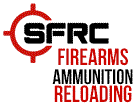I've sent the letter to CCFR as well... their response... "Bring it on"
Like I said in an earlier post, it doesn't end here.
Results 41 to 50 of 111
-
11-17-2015, 05:23 PM #41It's Not Always a Matter of Need...
-
The Following 10 Users Like This Post By Marshall
DanN (11-17-2015), Deuce-deuce (11-17-2015), Foker1337 (04-12-2016), Kane63 (11-18-2015), kennymo (11-17-2015), knuckledragger (11-18-2015), Mobusten (11-19-2015), Rory McCanuck (11-17-2015), The Joe-Man (11-17-2015), webster (11-17-2015)
-
11-17-2015, 05:29 PM #42
It's a hoot. I shoot the 465gr Lee flat point .500S&W bullet.
What it does to old computer drives..... hehe
I was thinking of a 458socom down the line, because I cast for 45-70 anyway.
May as well stick with the Sharps rifle at this point...
Oh, and I'm placing blame where it belongs, which sure as hell isn't with you.
-
The Following User Liked This Post By Mark-II
Rory McCanuck (11-17-2015)
-
11-17-2015, 05:41 PM #43The Gunsmithing Moderator

- Join Date
- Apr 2012
- Location
- I live among the creatures of the night (Edmonton)
- Posts
- 27,862
Sorry...Special bulletin for business #72....specifically section 4...Sorry....It's been a VERY long day. How does this come into play ?
Maximum Permitted Magazine Capacity
Special Bulletin for Businesses No. 72
Background
The maximum capacity of a cartridge magazine is set out in Part 4 of the Regulations Prescribing Certain Firearms and other Weapons, Components and Parts of Weapons, Accessories, Cartridge Magazines, Ammunition and Projectiles as Prohibited or Restricted. The Regulations prescribe “prohibited devices”, and a magazine that has a capacity which exceeds the maximum permitted capacity is a prohibited device. Businesses can be in possession of prohibited devices if appropriately licensed. However, individuals may not possess prohibited devices.
The magazine regulations have been in force since 1993. However, in recent years, new cartridge magazines have been introduced which have resulted in novel situations as it concerns the application of the Regulations. There has been no change to the Regulations. Nonetheless, the application of the existing Regulations to a few new products has given the appearance of a change in the law. This has been particularly evident in the case of cartridge magazines designed or manufactured for more than one type of firearm.
Purpose
The purpose of this bulletin is to provide greater clarity on the maximum permitted capacity of cartridge magazines designed or manufactured for use in more than one kind of firearm. Note that the maximum permitted capacity of a magazine is determined by the physical characteristics of the firearm it is designed or manufactured for and the type of ammunition for which it is designed. The maximum permitted capacity of the magazine does not depend on the classification of the firearm, nor does the magazine capacity influence the classification of the firearm.
Current Issues
1. Magazines designed or manufactured for both rimfire calibre rifles and handguns
Magazines designed to contain rimfire cartridges and designed or manufactured for use in a rifle do not have a regulated capacity. However, magazines designed to contain rimfire cartridges and designed or manufactured for use in a semiautomatic handgun are limited to 10 cartridges. Magazines designed or manufactured for use in both rifles and semiautomatic handguns are subject to the handgun limit of 10 cartridges.
Example:
Smith & Wesson M&P 15-22 rifle and 15-22P pistol chambered for 22LR caliber:
•the 10 round magazine is unregulated
•the 25 round magazine is a prohibited device
Example 2*: The Ruger BX-25 magazine, chambered for 22 LR calibre, is designed and manufactured for use in the Ruger SR22 rifle, the 10/22 family of rifles/carbines and the 22 Charger handgun. As a result, this magazine is a prohibited device unless modified so its capacity is 10 cartridges or less. (*This information was not included in the original version of this bulletin, but was added on 2013-09-05.)
2. Magazines designed or manufactured for both centrefire calibre rifles and handguns
Magazines designed to contain centrefire cartridges and designed or manufactured for use in a semiautomatic rifle are limited to five cartridges. However, magazines designed to contain centrefire cartridges and designed or manufactured for use in a semiautomatic handgun are limited to 10 cartridges. Magazines designed or manufactured for use in both semiautomatic rifles and semiautomatic handguns are subject to the limit of five cartridges.
Example:
Hi-Point rifle and handgun chambered for 9mm Luger caliber:
•magazine capacities over five rounds are prohibited.
3. Magazines designed or manufactured for both centrefire calibre semiautomatic rifles and other (non-semiautomatic) rifles
Magazines designed to contain centrefire cartridges and designed or manufactured for use in a semiautomatic rifle are limited to five cartridges. However, magazines designed to contain centrefire cartridges and designed or manufactured for use in a rifle other than a semiautomatic or automatic rifle, do not have a regulated capacity. Magazines that are designed or manufactured for use in both semiautomatic rifles and other (non-semiautomatic) rifles are subject to the semiautomatic rifle limit of five cartridges.
Example:
Remington model 7615 pump action rifle chambered for 223 Remington caliber:
•the 10 round magazine is prohibited
•the five round magazine is unregulated
4. Magazines designed for one firearm but used in a different firearm
The maximum permitted capacity of a magazine is determined by the kind of firearm it is designed or manufactured for use in and not the kind of firearm it might actually be used in. As a consequence, the maximum permitted capacity remains the same regardless of which firearm it might be used in.
Example:
The Marlin model 45 (Camp Carbine) rifle chambered for 45 Auto caliber uses magazines designed and manufactured for the Colt 1911 handgun, therefore the seven round and eight round capacities are permitted.
5. Magazines for semiautomatic handguns which contain more than ten (10) rounds of a different calibre
Magazines designed to contain centrefire cartridges and designed or manufactured for use in a semiautomatic handgun, are limited to 10 cartridges. The capacity is measured by the kind of cartridge the magazine was designed to contain. In some cases the magazine will be capable of containing more than 10 rounds of a different caliber; however that is not relevant in the determination of the maximum permitted capacity.
Example:
Heckler and Koch P7 pistol chambered for 9mm Luger caliber:
The magazine designed for the 40 S&W calibre variant of the pistol will hold 13 cartridges of 9mm Luger calibre and function in the 9mm Luger calibre P7 pistol. This is permissible as the maximum permitted capacity of the 40 S&W calibre magazine must be measured by the number of 40 S&W calibre cartridges it is capable of holding, which is 10 such cartridges in the case of the HK P7 pistol magazine.
For more information, please contact the RCMP Canadian Firearms Program by one of the following methods:
telephone: 1 800-731-4000
web site: www.rcmp-grc.gc.ca/cfp-pcaf/index-eng.htm
e-mail: [email protected]
This bulletin is intended to provide general information only. For legal references, please refer to the Firearms Act, the Criminal Code and Regulations. Provincial, territorial and municipal laws, regulations and policies may also apply.GOC moderator
Dealer/co-founder/co-owner of Tundra Supply Ltd.
www.tundrasupply.ca
June 2013 - The High River Gun Grab - NEVER FORGET !!!!
Feb 26 2014 - Swiss Arms prohibition and ordered confiscation by the RCMP - NEVER FORGET !!!!!
May 1 2020 - Liberal un-democratic mass prohibition order in council. - NEVER FORGET !!!!!
October 21 2022 - Liberals ban all handgun sales and transfers in Canada via order in council - NEVER FORGET !!!
-
11-17-2015, 05:49 PM #44
Error, please delete.
Last edited by Petamocto; 11-17-2015 at 06:14 PM.
-
11-17-2015, 05:51 PM #45
-
11-17-2015, 05:54 PM #46
-
11-17-2015, 05:55 PM #47
Do you have a scan or copy or even a screen grab of this RCMP letter? that would really help legitamize this issue. feel free to black out any personal info
-
11-17-2015, 06:09 PM #48
-
11-17-2015, 06:15 PM #49
-
11-17-2015, 06:24 PM #50
8 members and 89 guests browsing....smile and wave, boys; smile and wave...
-
The Following 6 Users Like This Post By Mark-II
Deuce-deuce (11-17-2015), FALover (11-17-2015), knuckledragger (11-18-2015), Scotlas (11-18-2015), Upspoon (02-12-2018), webster (11-17-2015)
























